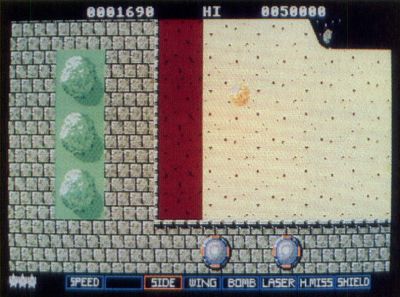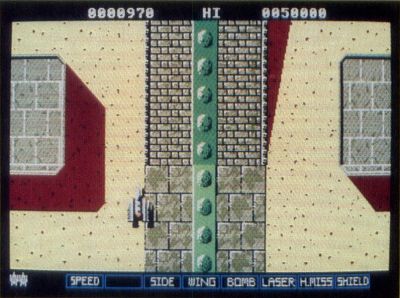Alcon ST
Taito
267 West Esplanade
North Vancouver, BC
Canada V7M 1A5
(604) 984-3344
$39.95, Color only
Reviewed by Frank Eva
Taito made its appearance in the ST software market with an excellent conversion of the coin-operated arcade game, Arkanoid. No doubt many ST owners were looking with eager anticipation to other releases from this giant of the industry. For many reasons, however, Alcon does not live up to expectations.
Alcon comes packaged in Taito's usual bifold slipcover and contains an historical scenario presented in comic-book style. It seems that the human inhabitants of the planet Theon, who fled here when their previous world, Orac, was attacked, are again under siege. ALCON, the Allied League of Cosmic Nations, must now attack the aliens in order to liberate their planet and the hostages held there.
The player pilots the most advanced starfighter, the SW475, capable of firing forward-projecting lasers, homing missiles and bombs, as well as side-firing energy weapons. Unfortunately, only one player at a time can play Alcon. Not only is there no simultaneous two-player mode, there isn't even an alternating two-player mode.


If the reader is not familiar with the Alcon coin-op, perhaps Xevious rings a bell. The two games are similar, being basically vertically scrolling shoot-'em-ups. The only difference in play mechanics is the way bombs are handled. I believe Xevious allowed a player to bomb stationary targets in a realistic bombing scenario. In Alcon, bombs are similar to forward-firing lasers in that they explode a certain distance in front of the craft, not below it.
In a nutshell, what the ST owner gets with Alcon is not a direct conversion from the original coin-op, but a pale imitation. The background graphics look like they came from an unexpanded IBM PC, although this is probably not possible since an IBM version hasn't been released.
In addition to the lackluster background graphics, Alcon features un-artistically portrayed attackers who have little or no animation. Further, the shadow of your ship constantly flickers; and even though there are usually fewer than six enemies on the screen at one time, the program noticeably bogs down in its execution. The SW475 at times moves painfully slow for an arcade game.
Also, the "better" weapons systems don't add much capability to the ship. The lasers are almost useless, since they have such a limited range. The shots won't even go far enough to make it off the screen unless you're flying within the top half of the action area. The wing guns don't add firepower; they just improve the range of the lasers while at the same time making the ship larger and thus easier to hit. The side—firing energy weapons are more like projecting shields—only if they happen to collide with something are they effective. This means you have to be close to your enemy to use them.
One last note: The high scores cannot be saved to disk. Even though this was also the case with Arkanoid, that game was so good that the lack of a high-score save could be forgiven.
Upcoming releases from Taito, Operation Wolf and Renegade, will use the actual arcade-machine graphic files for the ST conversions. Hopefully, these will take advantage of the ST's capabilities. Alcon sure doesn't.

Frank Eva is an auditor by profession, but has been involved in the computer industry ever since his purchase of an Atari 400 many years ago. He has dabbled in programming and has had several text adventures published.